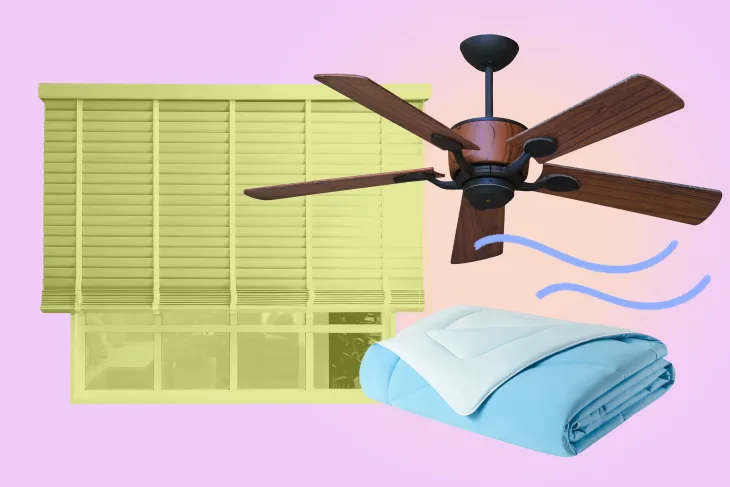The first summer we spent in our new home was a hot one. Temperatures started climbing early and I remember having to take our central air system (a heat pump) for a spin at the start of May. Our house had been a flip and the unit was fairly new, so I expected everything to run smoothly the first time I turned it on. While it did immediately cool down our first floor, I felt like I hit a wall of heat (aka a hot spot) as I walked up the stairs to our second floor.
I now know the reason — our unit is too small for our house and the duct work the installers used is the wrong type for a basement installation — but back when I was Googling “Why is my second floor so much hotter than the first floor?” I discovered that there could be several reasons for my problems.
Ray Brosnan, HVAC expert at Brosnan Property Solutions, says people can experience these hot spots for a variety of reasons. “Rooms that receive direct sunlight tend to become hotter than those in shaded areas,” he explains, adding that east- and west-facing rooms are particularly prone to this problem.
Inadequate insulation, closed or blocked vents, and nearby appliances (like ovens, dryers, and refrigerators) are also common culprits. While some hot spot fixes are very expensive (like mine, which requires either a whole new unit that will likely run tens of thousands of dollars), there are a few less costly options. Here are six ways to solve (re: cool down) the hot zones in your home.
Install the right curtains or blinds.
If your hot zone seems limited to a room with lots of sunshine or several windows, Brosnan says installing blinds, curtains, or shades can help reduce the heat. “Light-colored window coverings with reflective backing are especially effective in deflecting heat,” he explains.
Create a cross breeze.
Maximize natural ventilation by strategically opening windows to create cross breezes when your AC isn’t in use. “This technique allows fresh air to circulate and flush out stagnant heat, providing a cooling effect,” explains Ben Dhesi, the creator of the energy-saving mobile app HUGO.
Add insulation.
When your trouble stems more from a lack of insulation, Brosnan says you can reduce heat transfer by reinforcing the rooms where you notice the most heat leaking in. That may mean adding insulation to walls, attics, and floors or using weather stripping on leaky windows and doors.
The cost of this solution can vary, according to Brosnan. “Spray foam insulation and fiberglass batts are the two most commonly used materials and are relatively affordable,” he says, adding that spray foam can cost somewhere around $1.50 to $3.00 per square foot (including labor) whereas the fiberglass will be closer to $1.00.
Double check your airflow.
Making sure none of your vents are closed or blocked is probably the quickest (and cheapest) fix on this list. “Ensure air vents and registers are open and unobstructed, allowing air to flow freely,” Brosnan says. “Use fans to facilitate air movement within rooms and consider installing ceiling fans for better circulation.”
If possible, he says you can also adjust the air conditioning system to redirect more cool air to the warmer rooms. A professional HVAC technician can help balance the system and optimize its performance, which can run you anywhere from $100 to $500, depending on the “size of your system, complexity of the system, and your own location.”
Buy some cooling accessories.
There’s nothing worse than a sweaty night of sleep, which is why Dhesi suggests trying to beat the heat by hitting “add to cart.” Our hot zone happens to be where all of our bedrooms are, and I have managed to keep cooler at night by using the Evercool Cooling Comforter. I still get the comfort of having that added layer without sweltering underneath it.
Add smart vents.
There are some vents on the market that claim they will help “boost” your airflow with a low-level fan. “These can be useful in certain situations but are generally considered a less effective solution compared to addressing the underlying issues with the HVAC system or ductwork,” Brosnan says. “These fans are designed to increase the airflow from a specific vent, typically in rooms that are not adequately cooled or heated. They can provide a temporary solution to improve air circulation in a particular area.” Given my issue stems from having a system that can’t quite get cool air up the stairs, I’ll definitely be giving this one a try.











